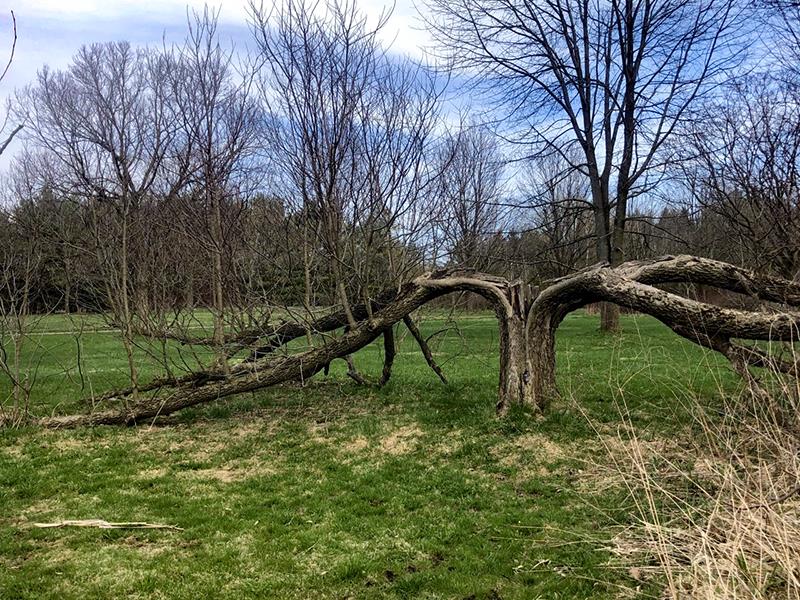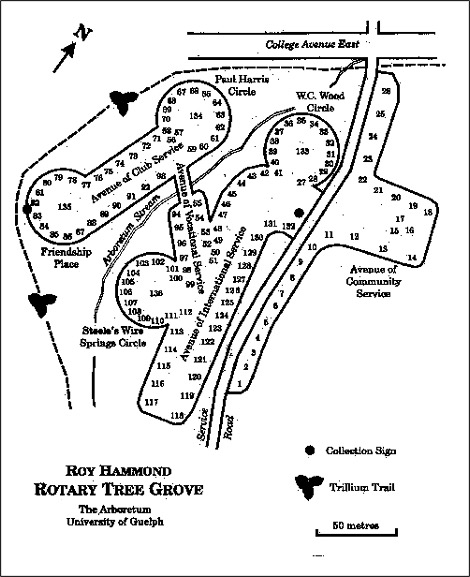 Our wonderful Guelph Arboretum is open year-round, from dawn till dusk for walks and exercise ... even during Covid-19 lockdowns.
Our wonderful Guelph Arboretum is open year-round, from dawn till dusk for walks and exercise ... even during Covid-19 lockdowns.The following information is from The Arboretum's newsletter, January 2021.
About the Octopus Tree
Dubbed the ‘Octopus Tree’ by our Manager of Horticulture, Sean Fox, this character was split in two during the great ice storm of 2013. Instead of piecing up the limbs and chipping them into a pile of mulch, we left the hackberry (Celtis occidentalis) to recover. It has been fascinating to observe how it has adapted its growth pattern, the sprawled trunks shot new branches straight up, resembling miniature hackberry trees.
The curiosity the Octopus Tree attracts from visitors to The Arboretum is a testament to how rarely damaged plants in our managed environments are invited to remain. Trees in the human landscape often serve a human purpose - planted for shade or privacy or fruit - and it is a treat for us to allow the Octopus Tree to continue growing in its own way. It began as a tree serving the purpose of “exemplary native street tree” in the Rotary Collection, and now it serves as an example of resilience and adaptation.
The Roy Hammond Rotary Tree Grove
Roy was a life-long resident of Guelph, Ontario, and one of its most active, vocal and involved citizens. As one of the founders of Hammond Manufacturing, he worked tirelessly to make the company a success. In his long, productive life, he led by example with an ethic of hard work and stewardship. He was a strong moral presence in everything he did. He was a generous contributor as well as an enthusiastic fund-raiser for many charities and organizations. In retirement, he continued active involvement into his nineties with the Rotary Club of Guelph, the Guelph-Wellington Men's Club and The Arboretum, University of Guelph. He passed away on June 3, 1999, in his 92nd year.
The purpose of the Rotary Grove collection is to display tree species used for urban planting. Trees play a vital role in the urban environment where all too often the reality is asphalt and concrete. The most important benefit provided by trees (other than their beauty!) is climate moderation. Trees reduce wind speed and cool the air by transpiring water from their leaves. Trees prevent dark surfaces (asphalt and rooftops) from storing heat in the summer. Trees also shield us from UV sunlight. A large tree can provide the cooling equivalent of five room size air conditioners. Up to 25% of your property’s value is related to trees.
The layout map of this grove reveals Rotary names such as:
- Paul Harris Circle
- W.D. Wood Circle
- Avenue of Club Service
- Avenue of International Service
- Avenue of Community Service
- Avenue of Vocational Service
- Friendship Place

